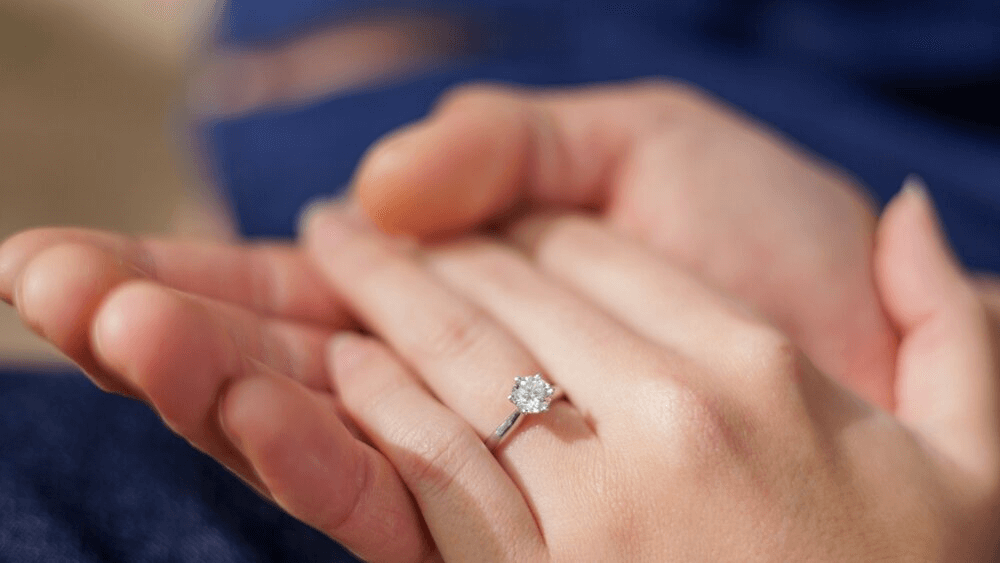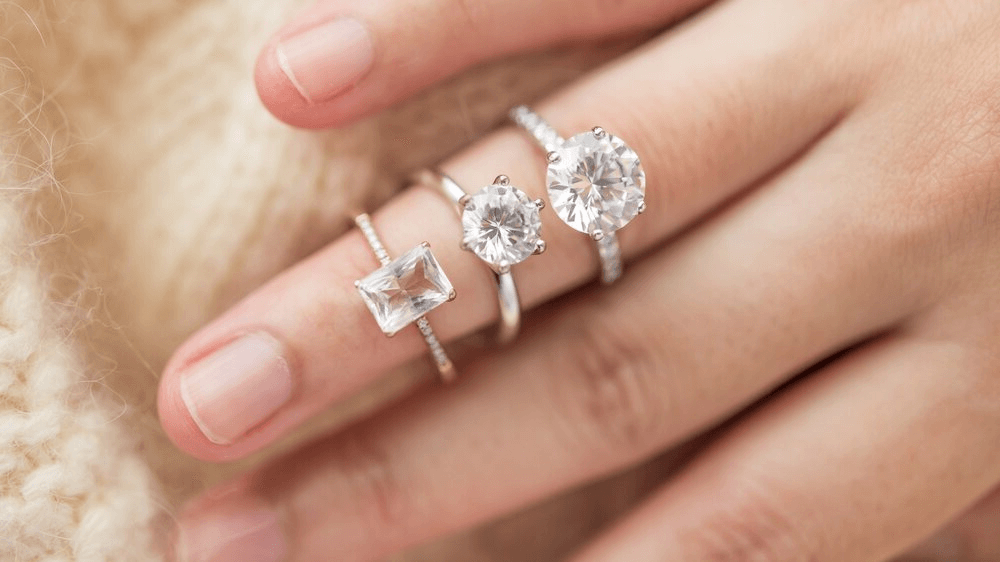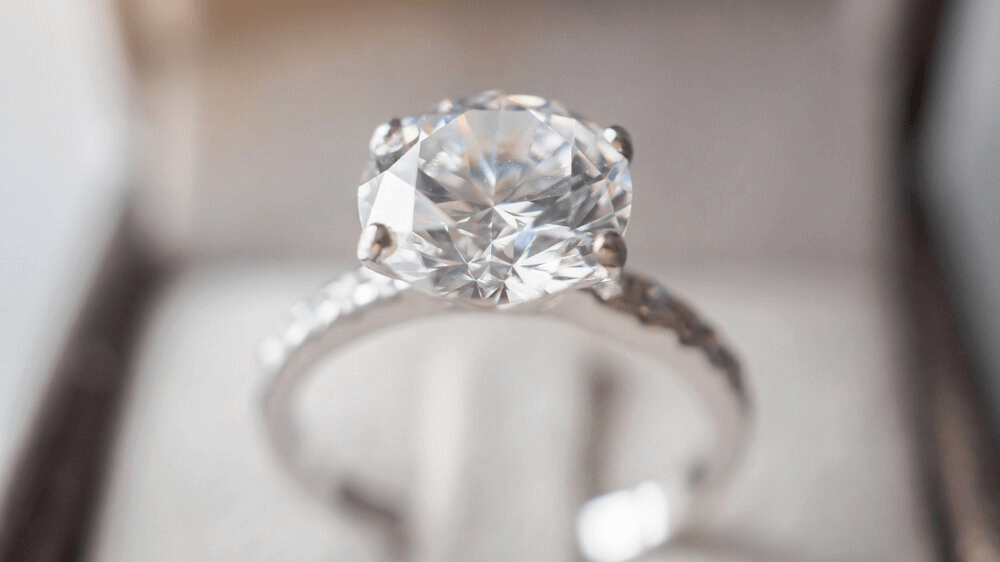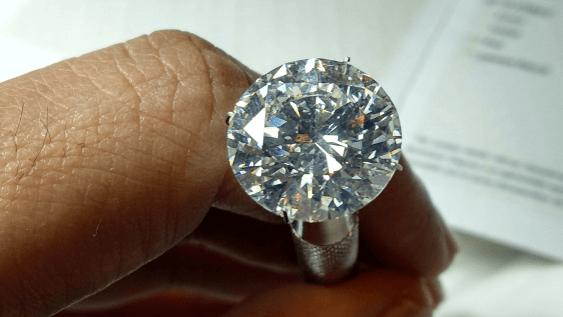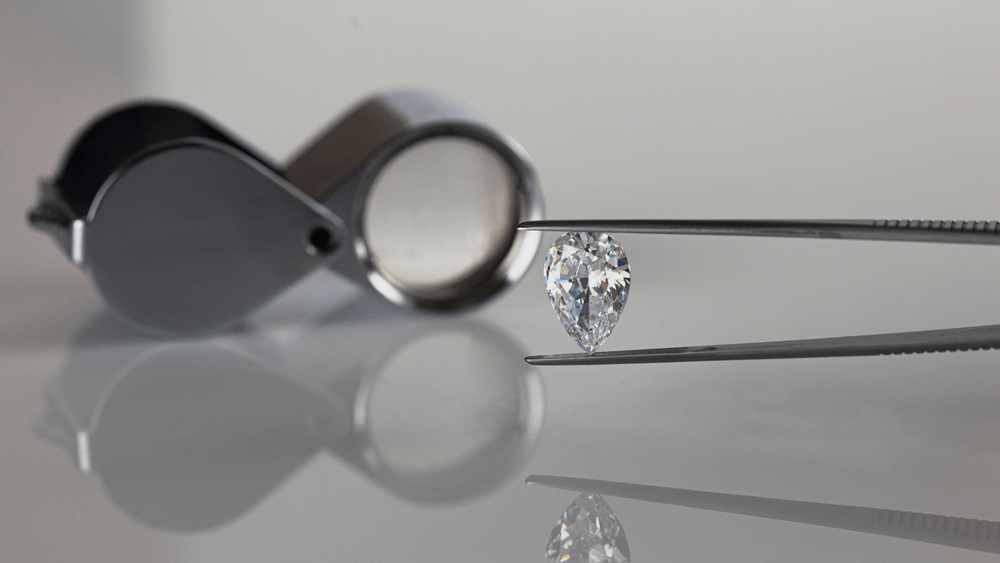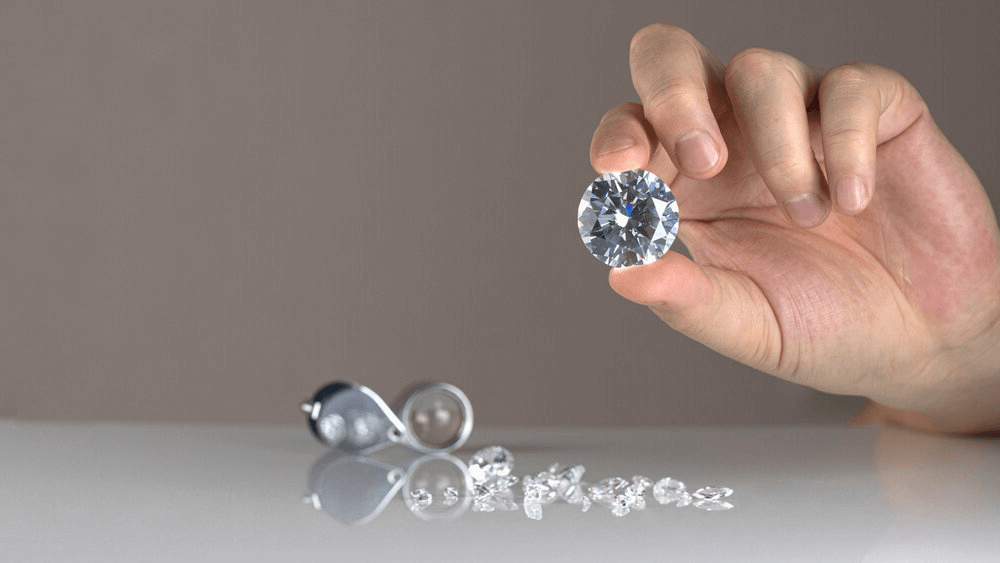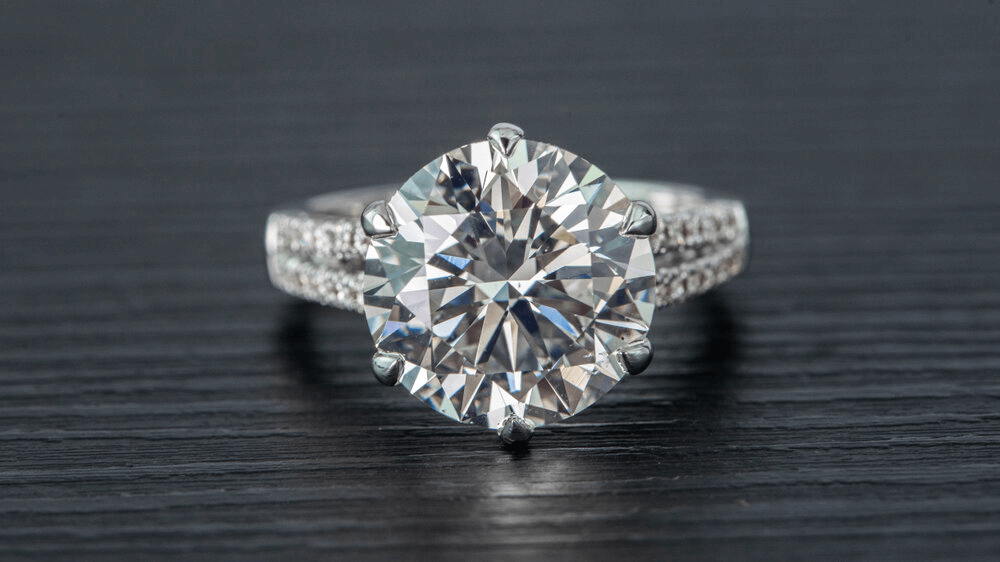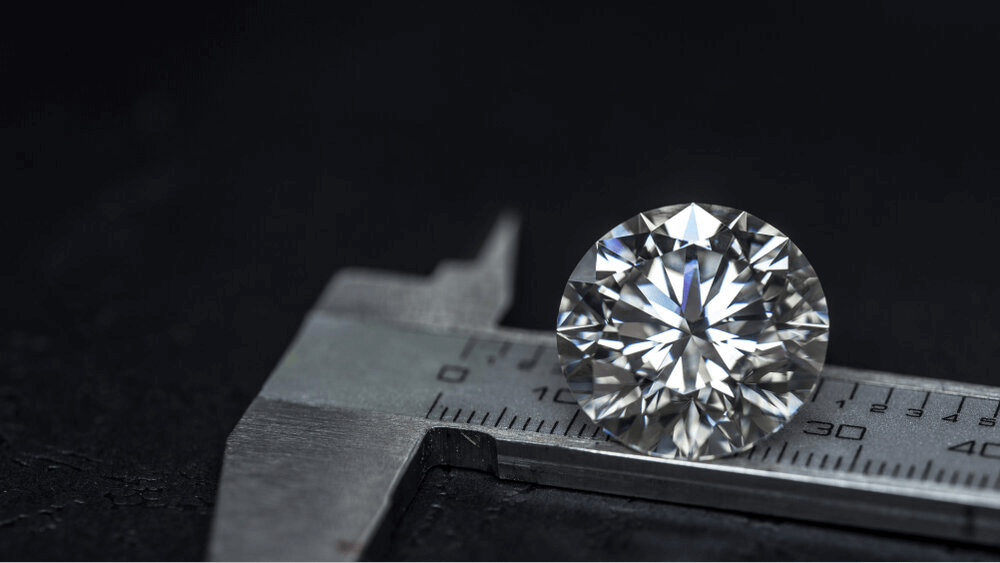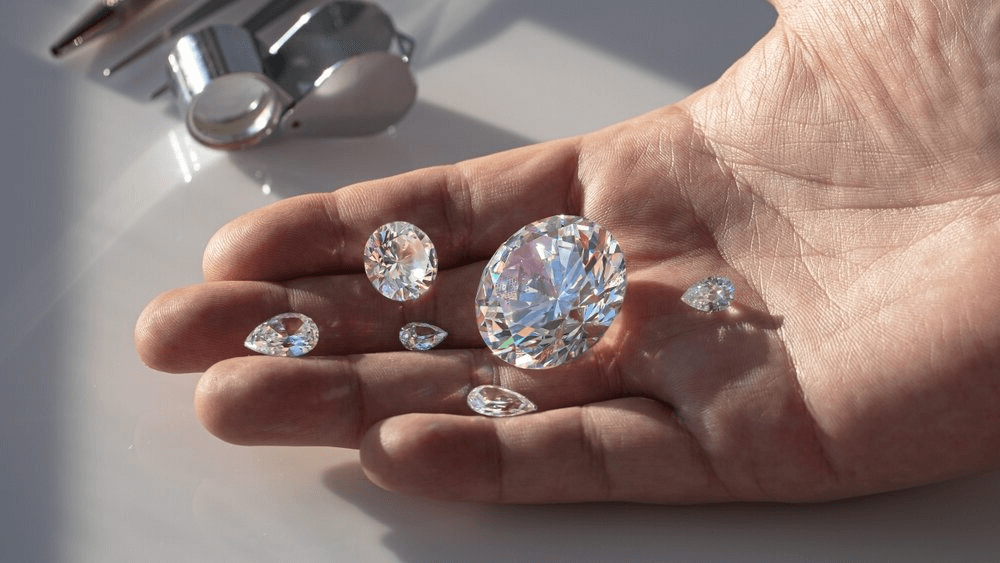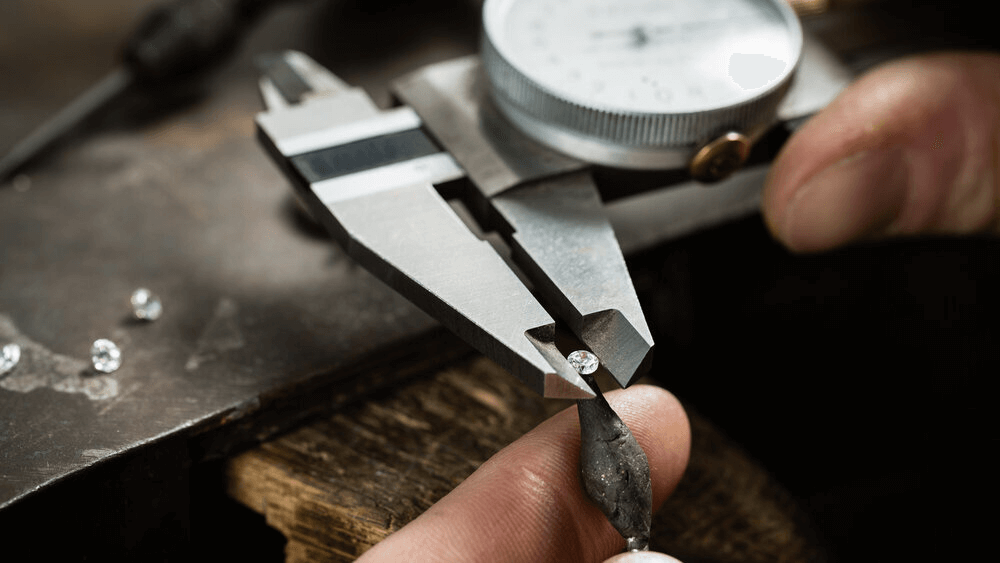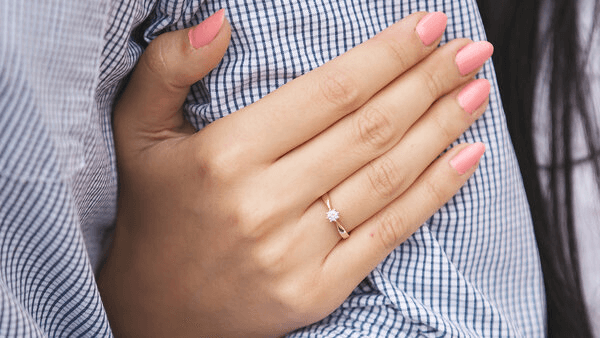Why Are Diamonds So Costly Expensive and Valuable

By Gary A.

Edited by Olivia H.
Published Mar 26, 2022
Edited on Mar 31, 2025
When it comes to understanding why diamonds are valuable and costly, it’s crucial to look beyond their beauty and delve into the rarity, craftsmanship, and market forces that drive their price.

- 7 Quick Tips for Evaluating Diamond Engagement Rings and Prices
- Introduction to Diamond Engagement Rings
- Understanding Why Diamonds are So Valuable
- The Economics Behind Diamond Pricing
- Our Expert Take: Why Are Diamonds so Expensive?
- 10 FAQs
Before we dive deeper into the specifics, here are some practical tips to help guide your decision-making process:
7 Quick Tips for Evaluating Diamond Engagement Rings and Prices
- Tip 1:Grasping the 4Cs: Understand that the cut determines the diamond’s brilliance and sparkle. A well-cut diamond can appear more luminous and valuable. Color: Remember, the closer to colorless, the higher the diamond’s value. Less color equals a higher grade. Clarity: Seek diamonds with fewer inclusions. Higher clarity can significantly elevate a diamond’s worth. Carat Weight: Larger diamonds are more rare and valuable, but consider balancing carat size with the other 4Cs for the best value.
- Tip 2:Stay Informed on Diamond Market Dynamics: Stay current with market trends to grasp how diamond values fluctuate and identify the most opportune times to buy.
- Tip 3:Prioritize Diamond Certification: Insist on a diamond that comes with a certification from respected authorities like the GIA or AGS, which confirms its quality and authenticity.
- Tip 4:Shape and Setting Influence on Price: The diamond’s shape and ring setting can affect its cost. Round diamonds and complex settings often demand a higher price tag.
- Tip 5:Comprehend Lab-Grown Diamonds’ Lower Value: Recognize that lab-grown diamonds, despite being visually similar, are less valuable due to their abundance and manufacturing process. Their lack of natural rarity impacts their market value.
- Tip 6:Beware of Overhyped Marketing: Be vigilant about marketing strategies that may inflate diamond prices. High costs don’t always equate to superior quality.
- Tip 7:Comparison Shopping is Key: Take time to explore various options. Compare prices between different jewelers, and don’t overlook online retailers for potential savings.
Now that you’ve got these practical tips, use Jeweler AI below to find the perfect engagement ring that suits your style and budget:
Introduction to Diamond Engagement Rings
It’s a tale as old as time. First comes love, (then comes a trip to the bank to withdraw thousands of dollars in savings for a diamond ring), then comes marriage and everything else thereafter. We’re glossing over a few details, of course, but the most important details are all there.
Except, of course, everything you need to know about finding a yes-worthy diamond ring (and why diamond rings have to bite that sizeable chunk out of your savings account).
Diamonds are infamously expensive items. Even if you don’t know a lot about them, where they come from, what they are, or why they’re the traditional choice for an engagement, you probably know that they don’t come cheap.
The answer is, like a diamond, multifaceted. It’s the result of a long list of factors – and all of them are worth understanding if you’re going to be staking everything on one of these stones.
Understanding Why Diamonds are So Valuable
The average price range for a 1 carat diamond typically falls between $2,500 and $20,000, although they can cost substantially less – or substantially more.
For a 1.5 carat diamond, however, the average price range is a lot higher – between $5,000 and $36,000. This is something we explain in a lot more detail in our guide to Diamond Prices, if you’re interested in learning more about how price increases alongside carat weight.
The most important thing to understand, however, is the fact that price can differ by thousands and thousands of dollars, even for diamonds of the same carat weight. So many more factors influence price. For this reason, the answer to the question, ‘How much does a diamond cost?’ really is a case of ‘the length of a piece of string’.
Suffice to say that diamonds are an expensive purchase – and for many, many reasons.
Diamond Rarity: Beyond the Sparkle
Diamonds are the product of billions of years’ worth of raw, natural power. They are mined from countries like Botswana, South Africa, Canada and Namibia, and represent major sources of income for them – and yet, they’re still relatively uncommon, and all the more valuable for it…
Diamonds are a finite resource, and the number of gem quality diamonds (diamonds good enough to be used in jewelry) is very small compared with the number of diamonds that aren’t beautiful enough to be sold to the public.
It’s not like you’ll struggle to find a beautiful diamond. They’re not so rare that tracking one down will have you cosplaying as Indiana Jones, but you will want to be aware of how a diamond’s features can make it rarer (and therefore more valuable) than others.
Since diamonds are a natural resource, it’s incredibly common for them to contain significant chemical impurities and inclusions. The randomness of their creation means that the risk of diamonds being visibly ‘flawed’ is high. This is why perfect diamonds are so popular among collectors – because the chances of them even existing are slim to none.
Put differently, diamonds with high color and clarity grades are rarer than diamonds with poor color and poor clarity. As a shopper, you’ll want to find a diamond that sits somewhere in the middle. This won’t be cheap, but it doesn’t have to blow your budget out of the water, either.
This rarity is, for the overwhelming majority of shoppers, a worthwhile investment. Consider the fact that lab grown diamonds hold so little value in comparison to natural diamonds, despite their visual similarities. There is a lot of sentimental and social value attached to these earth-made stones…
Cultural and Symbolic Significance
There is nothing like diamond. For engagements, for milestone gifts, for the red carpet – no other gemstone can come close to the power exerted by a beautiful piece of diamond jewelry. For this reason, their value is, understandably, high.
It has been this way for thousands of years – but particularly within the last century, ever since De Beers transformed the industry with their famous ‘Diamonds are forever’ slogan.
A part of diamonds’ high social value stems from their high price, but a part of their high price stems from their social value. The fact that most of us can’t imagine picking anything but diamond for our engagement rings says it all.
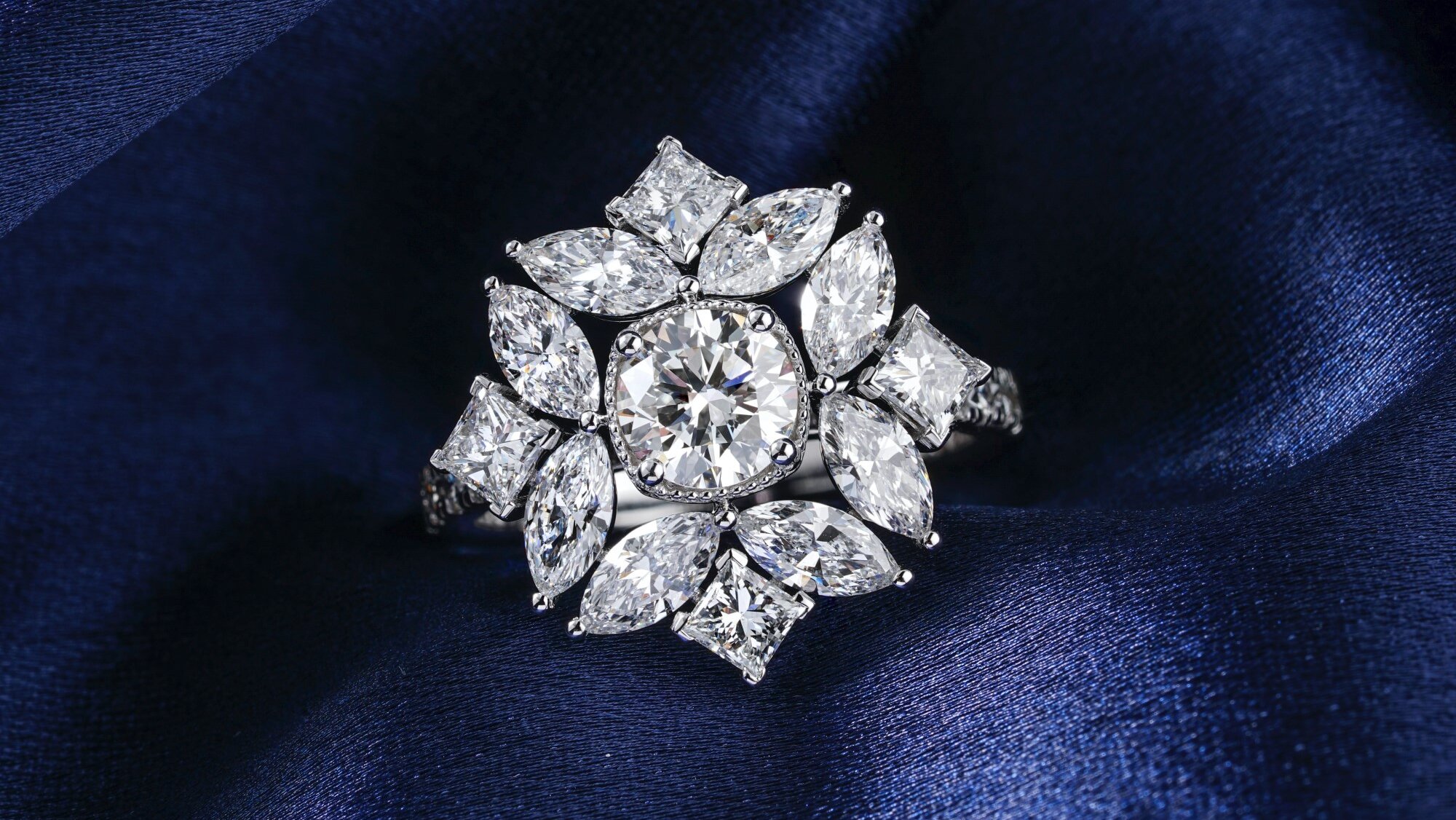
Marketing and Brand Perception
They are unique in their beauty and light performance, their strength, and their historic significance around the world.
There is no denying the beauty of diamond. Its glassy appearance, combined with an unrivalled ability to produce flashes of fire and brilliance whenever the light hits, makes it a totally unique choice for fine jewelry. It’s striking and capable of nabbing your attention even from across the room.
But, even though there’s nothing quite like diamond, there are plenty of other beautiful gemstones out there – so why has diamond become the near-unanimous choice? Because it’s not just beautiful, but it’s also incredibly strong. A beautiful engagement ring is going to be the world’s biggest disappointment if it stops looking beautiful in five, ten, or even twenty years. They are supposed to represent eternal love, and they can’t do that if they’ve got a shelf life of just a decade.
Durability
Diamond is stronger than any other natural substance, which means that it’ll last longer. Diamond engagement rings can be passed through generations, and heirloom diamonds can be treasured for centuries if they’re cared for properly.
Couple that with a rich history – millions and millions of years’ worth of history, behind every single stone out there – and you’ve got a clear winner for pretty much any bride or groom.
The Cost of Quality and Craftmanship
Natural diamonds are earth-made, but any natural diamond you consider purchasing will be the result of a tremendous amount of skill, time, and attention from diamond cutters, who have to ensure that the potential value of each rough stone is realized.
These days, cutters have a lot of tools at their disposal, and it’s possible to digitally ‘map out’ the rough stone in order to plan the best approach for creating the best diamond possible. Their priorities lie not just in retaining as much carat weight as possible (since every cut diamond will, inevitably, weigh less than the rough stone it came from), but also in cutting a shape with strong dimensions, and a beautiful sparkle.
This is skilled and demanding work, and a major reason behind the high cost of diamonds on the market.
Ethical Considerations and Diamond Pricing
Ethical diamonds inevitably cost more, because the supply chain is predicated on fairness and on ensuring that everyone – from the miners to the jewelers – is reimbursed for their work and skill. It’s a price that is always, always worth paying – and, these days, it’s easier than ever to find ethical diamonds.
The Economics Behind Diamond Pricing
Diamonds are rare, and their value is determined based on a long list of factors. Gold has a set market price, however, and doesn’t require the same extensive practices for extracting and cutting that diamonds require.
Plus, from a practical standpoint, diamonds are pretty lightweight. 1 carat – the average weight for a diamond sold for an engagement ring – is equal to just 0.2 grams, though the average price is around $6,000. Obviously, the value changes by thousands of dollars if you’re looking at a bag of melee diamonds totalling 1 carat (which will be far less valuable), but you get the idea. A 1 gram diamond is equal to 5 carats, which can push prices well into six figures.
Gold’s price per gram is much, much lower than that.
Our Expert Take: Why Are Diamonds so Expensive?
Diamonds are unlike anything else. Their value is a result of so many factors – some that have been around for thousands of years, others that are totally unique to each and every stone that comes onto the market.
Diamonds are collectors’ items, and some are so rare and coveted that they will sell at auction for millions of dollars. They are also a central part of traditions surrounding engagements and commitments in many, many parts of the world, and probably always will be.
By the time they make it to the jeweler’s workbench, they are also the product of incredible skill and a true testament to the entire industry dedicated to these beautiful stones.
10 FAQs
- Q: Why Are Diamonds So Expensive?
- A: Diamonds are expensive due to their rarity, the difficult and costly process of mining and cutting, and their cultural significance, especially in engagement and wedding traditions.
- Q: What Determines a Diamond’s Value?
- A: A diamond’s value is determined by the 4Cs: Cut, Color, Clarity, and Carat weight. Rarity, market demand, and whether the diamond is natural or lab-grown also play significant roles.
- Q: Are Lab-Grown Diamonds as Valuable as Natural Diamonds?
- A: No, lab-grown diamonds are typically less valuable than natural diamonds due to their manufacturing process and lack of natural rarity.
- Q: Do Diamonds Increase in Value Over Time?
- A: Diamonds can appreciate in value over time, especially rare and high-quality ones. However, the rate of appreciation varies and is not guaranteed.
- Q: How Can I Ensure I’m Buying a Quality Diamond?
- A: Always buy diamonds with a certification from reputable labs like GIA or AGS, and educate yourself about the 4Cs to evaluate its quality.
- Q: Is It Better to Buy Diamonds Online or In-Store?
- A: Both have their advantages. Online shopping often provides better prices and variety, while in-store purchases offer the chance to physically examine the diamond.
- Q: Can the Price of Diamonds Fluctuate?
- A: Yes, diamond prices can fluctuate based on market demand, availability, and global economic conditions.
- Q: How Can I Tell if a Diamond is Real?
- A: Professional appraisal, certification, and various tests like the fog test, water test, or using a diamond tester can determine if a diamond is real.
- Q: Are Colored Diamonds More Expensive?
- A: Some colored diamonds, like pinks or blues, are more expensive due to their rarity. However, less desirable colors may reduce a diamond’s value.
- Q: Why Do Similar Carat Diamonds Have Different Prices?
- A: Prices can differ based on the other 3Cs: Cut, Color, and Clarity. Even diamonds of the same carat weight can vary greatly in quality and appearance.
Navigate the diamond maze with Jeweler AI: Find the ideal balance between luxury and budget, and select a diamond ring that’s valuable, not expensive.
Here are more specific diamond prices topics to browse:
- Melee Diamonds: The Perfect Accents to Enhance the Center Stone
- Small Diamond Engagement Rings: Big Sparkle Comes In Little Packages
- 0.25 Carat Diamond: Tiny Treasure or Just Too Small?
- The True Value of a 0.5 Carat Diamond Ring Revealed
- 0.7, 0.8, 0.9 Carat Diamond Showdown: Which One Wins?
- Price Alert: Don’t Overpay for a 1 Carat Diamond Ring!
- What You Should Pay for a 1.5 Carat Diamond Ring?
- Price Alert: How Much Should You Pay for a 2 Carat Diamond Ring?
- How Much Does a 2.5 Carat Diamond Really Cost?
- The Real Cost of a 3 Carat Diamond Ring
- Industry Secret: How Much Does a 4-Carat Diamond Ring Actually Cost?
- How Much is Too Much? The True Cost of 5 Carat Diamond Ring!
- 6 Carat Diamond Rings: Pricing Breakdown & Value Tips
- 7 Carat Diamond Rings: Affordable Luxury Prices Revealed
- 8 Carat Diamond Rings: Price Comparison & Savings Tips
- 9 Carat Diamond Rings: Detailed Pricing Guide & Best Deals
- 10-13 Carat Diamonds: The Ultimate Symbol of Luxury!
- 15 Carat Diamonds: Why Celebrities Love Them!
- Unveiling the Majesty: The Secrets Behind the 20 Carat Diamond Ring!
- Decoding the Grandeur: The Journey to Choosing a 25 Carat Diamond Ring
- Average Carat Size for Rings: What’s the Ideal?
- Understanding What Is CTTW Diamond In Engagement Ring
FOLLOW-UP GUIDE SERIES

